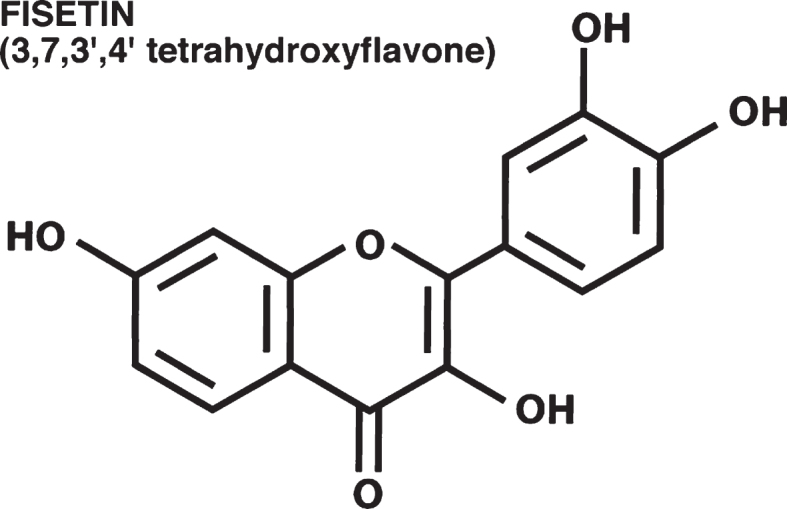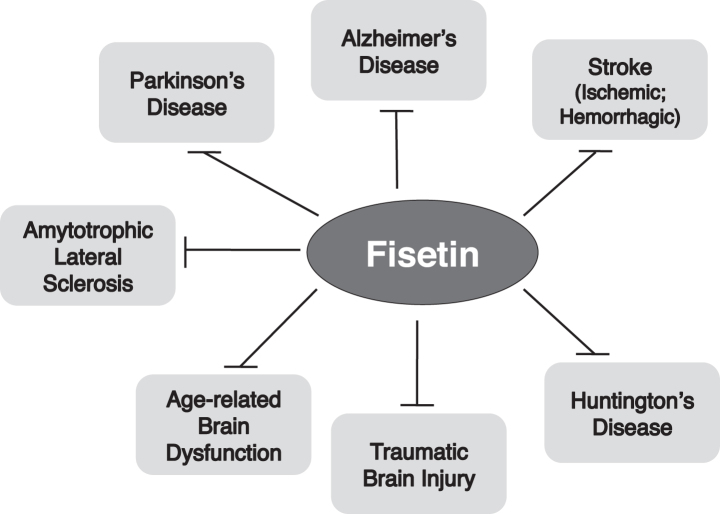Is Fisetin the Lifespan Extending Compound You’ve Been Looking For?
This yellow plant pigment holds promise in delaying aging and treating age-related diseases
Many efforts have been made on researching potential agents that target aging and age-related diseases. Among the popularly investigated agents are natural products like plant-based compounds. One promising example is fisetin — a micronutrient (polyphenol) with varying pharmacological properties that shows promising activity towards aging and age-related diseases.
So, what is fisetin, what’s known about its ability to influence aging and age-related diseases, and what studies are going on today testing its potential in people?
What Is Fisetin?
The first record of fisetin as a chemical compound came from a flowering called a smoke tree, dates back to 1833. Since then, fisetin has been identified as a metabolic byproduct of many plants, occurring in their green parts, fruits, as well as in barks and hardwood.
In terms of foods we commonly eat, fisetin is present in different fruits and vegetables such as apple, persimmon, grape, strawberry, kiwi, kale, cucumber, and onion — albeit in low, varying concentrations, from 2 to 160 micrograms per 1 gram of fresh biomass. The average daily intake of fisetin from various vegetable sources is estimated to be at the level of 0.4 mg.

How Does Fisetin Work?
Fisetin is a flavonol that shares distinct antioxidant properties with a plethora of other plant polyphenols. In particular, fisetin can induce the synthesis of the major antioxidant glutathione.
Fisetin exhibits a specific biological activity of considerable interest as it pertains to the protection of functional macromolecules against stress to protect cells.
The reason for this interest stems from relatively recent observations that the compound is not only particularly efficient as an antioxidant agent but also exhibits remarkable selectivity as regards influencing multiple biological processes considered crucial for biological balance (homeostasis).
Moreover, it shows potential as an anti-inflammatory, chemopreventive, chemotherapeutic, and recently also senotherapeutic agent — a drug that targets non-replicating cells commonly found in aging tissues.
Fisetin and cancer
Fisetin has shown promising anticancer activity in a wide range of cancers. Fisetin suppresses the cancer cell stages, prevents progression in cell cycle and cell growth, and induces a program for cell death (apoptosis).
Fisetin and the Brain
Fisetin has now been shown in preclinical models to be effective at preventing the development and progression of multiple neurological disorders including Alzheimer’s, Parkinson’s, and Huntington’s disease as well as amyotrophic lateral sclerosis. Fisetin also reduces changes in the brain associated with stroke, traumatic brain injury, and aging.

These beneficial effects stem from its actions on multiple pathways associated with different neurological disorders. These actions include its well-characterized anti-inflammatory and antioxidant effects as well as more recently described effects on the regulated cell death pathway, the gut microbiome, and its senolytic activity.
Fisetin and aging
Perhaps the most promising of the documented fisetin biological activities reside in the anticipated possibility of targeting fundamental aging mechanisms. Recent studies of cultured cells have shown that fisetin works by inhibiting certain cellular pathways that are known to affect aging.
Although the senescent cells resist engaging in apoptosis, it has been demonstrated that some combination of pharmacological agents called senolytics or senotherapeutics, such as Dasatinib with Quercetin, can overcome this resistance. A screening of the flavonoids revealed that fisetin was even more effective than quercetin and could accomplish the task of reducing senescence markers as a single agent.
Model experiments that started with yeast and proceeded through fruit fly to vertebrate animals demonstrate that fisetin can extend the lifespan of investigated organisms of both sexes.
As a result of these findings, a team at the Mayo Clinic led by Dr. James Kirkland has recently designed and begun a clinical trial aimed at the “Alleviation by Fisetin of Frailty, Inflammation, and Related Measures in Older Adults” (AFFIRM-LITE) with fisetin administered orally.
Fisetin Clinical Trials
The growing body of preclinical data, along with fisetin’s ability to modulate a large number of pathways associated with cancer, brain dysfunction, and aging strongly suggests that it would be worthwhile to pursue its therapeutic effects in humans. Since the majority of studies on the biological activity of fisetin are mainly academic, clinical trials evaluating its activity are still rare.
Recent clinical trials have provided a detailed evaluation of fisetin’s effects on altering biologic markers of inflammation, insulin resistance, and bone resorption and frailty in older postmenopausal women (AFFIRM). Studies suggest that fisetin may reduce oxidative stress, alleviate high blood sugar levels (hyperglycemia), and improve kidney function in people, warranting future clinical trials.
Fisetin’s Future Outlook
Fisetin isn’t the most soluble or bioavailable compound, and our bodies rapidly metabolize it. But due to its beneficial antioxidant, anti-inflammatory, antitumor, neuroprotective, and anti-aging biological activities, there is a need for suitable pharmaceutical formulations of fisetin. This quest for medicinal status may be slow and difficult, as the history of flavonoids’ retraction from the vitamin status shows. Through either chemical synthesis or chemical transformation of intermediate raw materials, fisetin may one day be a part of the pharmaceutical market. Along those lines, it seems time that fisetin is taken seriously as a possible treatment for cancer, neurological diseases, and age-related diseases as well as to promote healthy aging.

